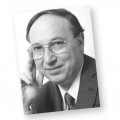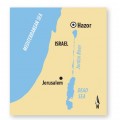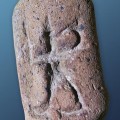Biblical Archaeology Review
Biblical Archaeology Review is the flagship publication of the Biblical Archaeology Society. For more than 40 years it has been making the world of archaeology in the lands of the Bible come alive for the interested layperson. Full of vivid images and articles written by leading scholars, this is a must read for anyone interested in the archaeology of the ancient Near East.
Hershel’s Crusade, No. 3: Forgeries and Unprovenanced Artifacts
Scholars have debated what to do with forgeries and unprovenanced artifacts. Many believe they should not be published or considered reliable historical evidence. However, some, Hershel Shanks included, believe they should be treated as valuable pieces of the archaeological puzzle. Paleographer Ada Yardeni highlights a few significant cases.
Hershel’s Crusade, No. 2: For King and Country: Chronology and Minimalism
Is the Hebrew Bible a reliable source of information about ancient Israel? Does it contain true histories or just constructs? Archaeologist William Dever presents an overview of the controversy between the extreme skeptics (minimalists) and the more optimistic Biblical maximalists, highlighting the vital role of Hershel Shanks and BAR in that debate.
Hershel’s Crusade, No. 1: He Who Freed the Dead Sea Scrolls
In 1991, with the support of Hershel Shanks and BAS, Martin Abegg, Jr., contemplated committing “academic suicide”—publishing reconstructions of the Dead Sea Scrolls without the permission of the sluggish and secretive publication team. Abegg details how, in fact, Hershel’s impact resonates far beyond that remarkable moment.
Raising the BAR: The history of the Biblical Archaeology Society
From humble beginnings, Biblical Archaeology Review has become the world’s most widely read Biblical archaeology magazine. See how it all began—with Hershel Shanks at the helm—and some highlights from the past 43 years.
Celebrating Hershel Shanks
Hershel Shanks, BAR’s founder and Editor Emeritus, has changed the face of Biblical archaeology. Read contributions from Hershel’s colleagues and friends, who reflect on their interactions with Hershel over the years and on how he has influenced the field of Biblical archaeology—for better or worse!




